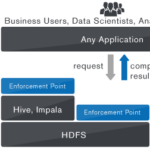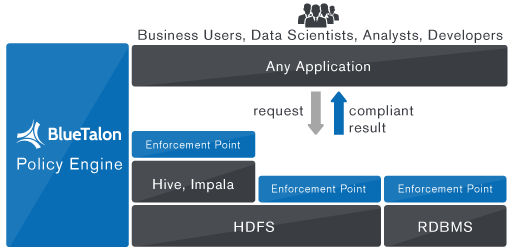Analogue’s Mega Sg is the Sega Genesis Mini alternative for the discerning retro gaming fan
The official Sega Genesis Mini is coming in September and hopes to capitalize on some of the retro gaming hype that turned the Super Nintendo and NES Mini Classic editions into best-sellers. But there’s already a modern piece of hardware out there capable of playing Sega Genesis games on your HDTV — plus Mega Drive, Master System and Sega CD, too.
The Analogue Mega Sg is the third in a series of reference-quality, FPGA-based retro consoles from Analogue, a company that prides itself on accuracy in old-school gaming. It provides unparalleled, non-emulated gameplay with zero lag and full 1080p output to work with your HD or even 4K TV in a way no other old-school gaming hardware can.
For $189.99 (which is just about double the asking price of the Sega Genesis Mini), you get the console itself, an included Master System cartridge adapter, an HDMI cable and a USB cable for power supply (plus a USB plug, though, depending on your TV, you might be able to power it directly). The package also includes a silicon pad should you want to use it with original Sega CD hardware, which plugs into the bottom of the SG hardware just like it did with the original Genesis. It includes two ports that support original wired Genesis controllers, or you can also opt to pick up an 8bitdo M30 wireless Genesis controller and adapter, which retails for $24.99.
Like the Nt mini did for NES, and the Super Nt did for SNES before it, the Mega Sg really delivers when it comes to performance. Games look amazing on my 4K LG OLED television, and I can choose from a variety of video output settings to tune it to my liking, including adding simulated retro scaliness and more to make it look more like your memory of playing on an old CRT television.
Sound is likewise excellent — those opening notes of Ecco the Dolphin sounded fantastic rendered in 48KHz 16-bit stereo coming out of my Sonos sound system. Likewise, Sonic’s weird buzzsaw razor whine came through exactly as remembered, but definitely in higher definition than anything that actually played out of my old TV speakers as a kid.
Even if you don’t have a pile of original Sega cartridges sitting around ready to play (though I bet you do if you’re interested in this piece of kit), the Mega Sg has something to offer: On board, you get a digital copy of the unreleased Sega Genesis game “Hardcore,” which was nearly complete in 1994 but which went unreleased. It’s been finished and renamed “Ultracore,” and you can run it from the console’s main menu as soon as you plug it in and fire it up.
Analogue plans to add more capabilities to the Mega Sg in the future, with cartridge adapters that will allow it to run Mark III, Game Gear, Sega MyCard, SG-1000 and SC-3000 games, too. These will all be supported by the FPGA Analogue designed for the Mega Sg, too, so they’ll also be running natively, not emulated, for a true recreation of the original gaming experience.
If you’re really into classic games, and care a lot about accuracy, this is definitely the best way to play Sega games on modern TVs — and it’s also just super fun.
Powered by WPeMatico
A guide to Virtual Beings and how they impact our world
Money from big tech companies and top VC firms is flowing into the nascent “virtual beings” space. Mixing the opportunities presented by conversational AI, generative adversarial networks, photorealistic graphics, and creative development of fictional characters, “virtual beings” envisions a near-future where characters (with personalities) that look and/or sound exactly like humans are part of our day-to-day interactions.
Last week in San Francisco, entrepreneurs, researchers, and investors convened for the first Virtual Beings Summit, where organizer and Fable Studio CEO Edward Saatchi announced a grant program. Corporates like Amazon, Apple, Google, and Microsoft are pouring resources into conversational AI technology, chip-maker Nvidia and game engines Unreal and Unity are advancing real-time ray tracing for photorealistic graphics, and in my survey of media VCs one of the most common interests was “virtual influencers”.
The term “virtual beings” gets used as a catch-all categorization of activities that overlap here. There are really three separate fields getting conflated though:
- Virtual Companions
- Humanoid Character Creation
- Virtual Influencers
These can overlap — there are humanoid virtual influencers for example — but they represent separate challenges, separate business opportunities, and separate societal concerns. Here’s a look at these fields, including examples from the Virtual Beings Summit, and how they collectively comprise this concept of virtual beings:
Virtual companions
Virtual companions are conversational AI that build a unique 1-to-1 relationship with us, whether to provide friendship or utility. A virtual companion has personality, gauges the personality of the user, retains memory of prior conversations, and uses all that to converse with humans like a fellow human would. They seem to exist as their own being even if we rationally understand they are not.
Virtual companions can exist across 4 formats:
- Physical presence (Robotics)
- Interactive visual media (social media, gaming, AR/VR)
- Text-based messaging
- Interactive voice
While pop culture depictions of this include Her and Ex Machina, nascent real-world examples are virtual friend bots like Hugging Face and Replika as well as voice assistants like Amazon’s Alexa and Apple’s Siri. The products currently on the market aren’t yet sophisticated conversationalists or adept at engaging with us as emotional creatures but they may not be far off from that.
Powered by WPeMatico
Ordermark, the online-delivery order management service for restaurants, raises $18 million
Los Angeles-based Ordermark, the online delivery management service for restaurants founded by the scion of the famous, family-owned Canter’s Deli, said it has raised $18 million in a new round of funding.
The round was led by Boulder-based Foundry Group. All of Ordermark’s previous investors came back to provide additional capital for the company’s new funding, including: TenOneTen Ventures, Vertical Venture Partners, Mucker Capital, Act One Ventures and Nosara Capital, which led the Series A funding.
“We created Ordermark to help my family’s restaurant adapt and thrive in the mobile delivery era, and then realized that as a company, we could help other restaurants experiencing the same challenges. We’ve been gratified to see positive results come in from our restaurant customers nationwide,” said Alex Canter, in a statement.
A fourth-generation restaurateur, Canter built the technology on the back of his family deli’s own needs. The company has integrated with point of sale systems, kitchen displays and accounting tools, and with last-mile delivery companies.
As the company expands, it’s looking to increase its sales among the virtual restaurants powered by cloud kitchens and delivery services like Uber Eats, Seamless/Grubhub and others, the company said in a statement.
Although the business isn’t profitable, Ordermark is now in more than 3,000 restaurants. The company has integrations with more than 50 ordering services.
Powered by WPeMatico
Tesseract makes spacecraft propulsion smaller, greener, stronger
Launch vehicles and their enormous rocket engines tend to receive the lion’s share of attention when it comes to space-related propulsion, but launch only takes you to the edge of space — and space is a big place. Tesseract has engineered a new rocket for spacecraft that’s not only smaller and more efficient, but uses fuel that’s safer for us down here on the surface.
The field of rocket propulsion has been advancing constantly for decades, but once in space, there’s considerably less variation. Hydrazine is a simple and powerful nitrogen-hydrogen fuel that’s been in use since the ’50s, and engines using it (or similar “hypergolic” propellants) power many a spacecraft and satellite today.
There’s just one problem: Hydrazine is horribly toxic and corrosive. Handling it must be done in a special facility, using extreme caution and hazmat suits, and very close to launch time — you don’t want a poisonous explosive sitting around any longer than it has to. As launches and spacecraft multiply and costs drop, hydrazine handling remains a serious expense and danger.
Alternatives for in-space propulsion are being pursued, like Accion’s electrospray panels, Hall effect thrusters (on SpaceX’s Starlink satellites) and light sails — but ultimately, chemical propulsion is the only real option for many missions and craft. Unfortunately, research into alternative fuels that aren’t so toxic hasn’t produced much in the way of results — but Tesseract says the time has come.
“There was some initial research done at China Lake Naval Station in the ’90s,” said co-founder Erik Franks, but it fizzled out when funds were reallocated. “The timing also wasn’t right because the industry was still dominated by very conservative defense contractors who were content with the flight-proven toxic propellant technology.”

A live fire test of Tesseract’s Rigel engine.
The lapsed patents for these systems, however, pointed the team in the right direction. “The challenge for us has been going through the whole family of chemicals and finding which works for us. We’ve found a really good one — we’re keeping it as kind of a trade secret but it’s cheap, and really high-performance.”
You wouldn’t want to rinse your face with it, but you can fuel a spacecraft wearing Gore-Tex coveralls instead of a hermetically sealed hazmat suit. Accidental exposure doesn’t mean permanent tissue damage like it might with hydrazine.
The times have changed, as well. The trend in space right now is away from satellites that cost hundreds of millions and stay in geosynchronous orbit for decades, and toward smaller, cheaper birds intended to last only five or 10 years.
More spacecraft being made by more people makes safer, greener alternatives more attractive, of course: lower handling costs, less specialized facilities and so on further democratize the manufacturing and preparation processes. But there’s more to it than that.
If all anyone wanted was to eliminate hydrazine-based propulsion, they could replace the engine with an electric option like a Hall effect thruster, which gets its thrust from charged particles exiting the assembly and imparting an infinitesimal force in the opposite direction — countless times per second, of course. (It adds up.)
But these propulsion methods, while they have a high specific impulse — a measurement of how much force is generated per unit of fuel — they produce very little thrust. It’s like suggesting someone take a solar-powered car with a max speed of 5 MPH instead of a traditional car with a V6. You’ll get there, and economically, but not in a hurry.
Consider that a satellite, once brought to low orbit by a launch vehicle, must then ascend on its own power to the desired altitude, which may be hundreds of kilometers above. If you use a chemical engine, that could be done in hours or days, but with electric, it might take months. A military comsat meant to stay in place for 20 years can spare a few months at the outset, but what about the thousands of short-life satellites a company like Starlink plans to launch? If they could be operational a week after launch rather than months, that’s a non-trivial addition to their lifespan.
“If you can get rid of the toxicity and handling costs of conventional chemical propulsion, but maintain performance, we think green chemical is a clear winner for the new generation of satellites,” Franks said. And that’s what they claim to have created. Not just on paper either, obviously; here’s a video of a fire test from earlier this year.
“It’s also important at end of life, where doing a long, slow spiral deorbit, repeatedly crossing the orbits of other satellites, dramatically increases the risk of collision,” he continued. “For responsibly managing these large, planned constellations the ability to quickly deorbit at end of life will be especially important to avoid creating an unsustainable orbital debris problem.”
Tesseract has only seven full-time employees, and was a part of Y Combinator’s Summer 2017 class. Since (and before) then they’ve been hard at work engineering the systems they’ll be offering, and building relationships with aerospace.

A render of Tesseract’s two flagship products — Adhara on the left and Polaris on the right.
They’ve raised a $2 million seed round, but you don’t have to be a rocket scientist to know that’s not the kind of money that puts things into space. Fortunately, the company already has its first customers, one of which is still in stealth but plans to launch a Moon mission next year (and you better believe we’re following up on that hot tip). The other is Space Systems/Loral, or SSL, which has signed a $100 million letter of intent.
There are two main products Tesseract plans to offer. Polaris is a “kickstage,” essentially a short-range spacecraft used to deliver satellites to more distant orbits after being taken up to space by a launch vehicle. It’s powered by the company’s larger Rigel engines; this is the platform purportedly headed to the Moon, and you can see it propelling a clutch of 6U smallsats on the right in the image above.
But Franks thinks the money is elsewhere. “The systems we think will be a bigger market opportunity are the smallsat propulsion systems,” he said. Hence the second product, Adhara, a propulsion bus for smaller satellites and craft that the company is focusing on keeping straightforward, compact and, of course, green. (It’s the smaller rig in the image above; the thrusters are named Lyla.)
“We’ve heard from customers that complete, turnkey systems are what they mostly want, rather than buying components from many vendors and doing all the systems integration themselves like the old-school satellite manufacturers have historically done,” Franks said. So that’s what Adhara is for: “Keep it simple, bolt it on there, let it maneuver where it needs to go.”
Engineering these engines was no cakewalk, naturally, but Tesseract wasn’t reinventing the wheel. The principles are very similar to traditional engines, so development costs weren’t ridiculous.
The company isn’t pretending these are the only solutions that make sense now. If you need to have the absolute lowest mass or volume dedicated to propulsion, or don’t really care if it takes a week or a year to get where you’re going, electric propulsion is still probably a better deal. And for major missions that require high delta-V and don’t mind dealing with the attendant dangers, hydrazine is still the way to go. But the market that’s growing the most is neither one of these, and Tesseract’s engines sit in a middle ground that’s efficient, compact and far less dangerous to work with.
Powered by WPeMatico
Facebook and YouTube’s moderation failure is an opportunity to deplatform the platforms
Facebook, YouTube, and Twitter have failed their task of monitoring and moderating the content that appears on their sites; what’s more, they failed to do so well before they knew it was a problem. But their incidental cultivation of fringe views is an opportunity to recast their role as the services they should be rather than the platforms they have tried so hard to become.
The struggles of these juggernauts should be a spur to innovation elsewhere: While the major platforms reap the bitter harvest of years of ignoring the issue, startups can pick up where they left off. There’s no better time to pass someone up as when they’re standing still.
Asymmetrical warfare: Is there a way forward?
At the heart of the content moderation issue is a simple cost imbalance that rewards aggression by bad actors while punishing the platforms themselves.
To begin with, there is the problem of defining bad actors in the first place. This is a cost that must be borne from the outset by the platform: With the exception of certain situations where they can punt (definitions of hate speech or groups for instance), they are responsible for setting the rules on their own turf.
That’s a reasonable enough expectation. But carrying it out is far from trivial; you can’t just say “here’s the line; don’t cross it or you’re out.” It is becoming increasingly clear that these platforms have put themselves in an uncomfortable lose-lose situation.
If they have simple rules, they spend all their time adjudicating borderline cases, exceptions, and misplaced outrage. If they have more granular ones, there is no upper limit on the complexity and they spend all their time defining it to fractal levels of detail.
Both solutions require constant attention and an enormous, highly-organized and informed moderation corps, working in every language and region. No company has shown any real intention to take this on — Facebook famously contracts the responsibility out to shabby operations that cut corners and produce mediocre results (at huge human and monetary cost); YouTube simply waits for disasters to happen and then quibbles unconvincingly.
Powered by WPeMatico
Dark emerges from stealth with unique ‘deployless’ software model
Dark has been keeping its startup in the dark for the last couple of years while it has built a unique kind of platform it calls “deployless” software development. If you build your application in Dark’s language inside of Dark’s editor, the reward is you can deploy it automatically on Dark’s infrastructure on Google Cloud Platform without worrying about all of the typical underlying deployment tasks.
The company emerged from stealth today and announced $3.5 million in seed funding, which it actually received back in 2017. The founders have spent the last couple of years building this rather complex platform.
Ellen Chisa, CEO and co-founder at the company, admits that the Dark approach requires learning to use her company’s toolset, but she says the trade-off is worth it because everything has been carefully designed to work in tandem.
“I think the biggest downside of Dark is definitely that you’re learning a new language, and using a different editor when you might be used to something else, but we think you get a lot more benefit out of having the three parts working together,” she told TechCrunch.
She added, “In Dark, you’re getting the benefit of your editor knowing how the language works. So you get really great autocomplete, and your infrastructure is set up for you as soon as you’ve written any code because we know exactly what is required.”
It’s certainly an intriguing proposition, but Chisa acknowledges that it will require evangelizing the methodology to programmers, who may be used to employing a particular set of tools to write their programs. She said the biggest selling point is that it removes so much of the complexity around deployment by bringing an integrated level of automation to the process.
She says there are three main benefits to Dark’s approach. In addition to providing automated infrastructure, which is itself a major plus, developers using Dark don’t have to worry about a deployment pipeline. “As soon as you write any piece of backend code in Dark, it is already hosted for you,” she explained. The last piece is that tracing is built right in as you code. “Because you’re using our infrastructure, you have traces available in your editor as soon as you’ve written any code,” she said.
Chisa’s co-founder and company CTO is Paul Biggar, who knows a thing or two about deployment, having helped found CircleCI, the CI/CD pioneering company.
As for that $3.5 million seed round, it was led by Cervin Ventures, with participation from Boldstart, Data Collective, Harrison Metal, Xfactor (Erica Brescia), Backstage, Nextview, Promus, Correlation, 122 West and Yubari.
Powered by WPeMatico
Google’s Pixel 4 smartphone will have motion control and face unlock
Google’s Pixel 4 is coming out later this year, and it’s getting the long-reveal treatment thanks to a decision this year from Google to go ahead and spill some of the beans early, rather than saving everything for one big, final unveiling closer to availability. A new video posted by Google today about the forthcoming Pixel 4 (which likely won’t actually be available until fall) shows off some features new to this generation: Motion control and face unlock.
The new “Motion Sense” feature in the Pixel 4 will detect waves of your hand and translate them into software control, including skipping songs, snoozing alarms and quieting incoming phone call alerts, with more planned features to come, according to Google. It’s based on Soli, a radar-based fine motion detection technology that Google first revealed at its I/O annual developer conference in 2016. Soli can detect very fine movements, including fingers pinched together to mimic a watch-winding motion, and it got approval from the FCC in January, hinting it would finally be arriving in production devices this year.
Pixel 4 is the first shipping device to include Soli, and Google says it’ll be available in “select Pixel countries” at launch (probably due to similar approvals requirements wherever it rolls out to consumers).
Google also teased “Face unlock,” something it has supported in Android previously — but Google is doing it very differently with the Pixel 4 than it has been handled on Android in the past. Once again, Soli is part of its implementation, turning on the face unlock sensors in the device as it detects your hand reaching to pick up the device. Google says this should mean that the phone will be unlocked by the time you’re ready to use it, as it does this all on the fly, and works from pretty much any authentication.
Face unlock will be supported for authorizing payments and logging into Android apps, as well, and all of the facial recognition processing done for face unlock will occur on the device — a privacy-oriented feature that’s similar to how Apple handles its own Face ID. In fact, Google also will be storing all the facial recognition data securely in its own dedicated on-device Titan M security chip, another move similar to Apple’s own approach.
Google made the Pixel 4 official and tweeted photos (or maybe photorealistic renders) of the new smartphone back in June, bucking the trend of keeping things unconfirmed until an official reveal closer to release. Based on this update, it seems likely we can expect to learn more about the new smartphone ahead of its availability, which is probably going to happen sometime around October, based on past behavior.
Powered by WPeMatico
Microsoft acquires data privacy and governance service BlueTalon
Microsoft today announced that it has acquired BlueTalon, a data privacy and governance service that helps enterprises set policies for how their employees can access their data. The service then enforces those policies across most popular data environments and provides tools for auditing policies and access, too.
Neither Microsoft nor BlueTalon disclosed the financial details of the transaction. Ahead of today’s acquisition, BlueTalon had raised about $27.4 million, according to Crunchbase. Investors include Bloomberg Beta, Maverick Ventures, Signia Venture Partners and Stanford’s StartX fund.
“The IP and talent acquired through BlueTalon brings a unique expertise at the apex of big data, security and governance,” writes Rohan Kumar, Microsoft’s corporate VP for Azure Data. “This acquisition will enhance our ability to empower enterprises across industries to digitally transform while ensuring right use of data with centralized data governance at scale through Azure.”
Unsurprisingly, the BlueTalon team will become part of the Azure Data Governance group, where the team will work on enhancing Microsoft’s capabilities around data privacy and governance. Microsoft already offers access and governance control tools for Azure, of course. As virtually all businesses become more data-centric, though, the need for centralized access controls that work across systems is only going to increase and new data privacy laws aren’t making this process easier.
“As we began exploring partnership opportunities with various hyperscale cloud providers to better serve our customers, Microsoft deeply impressed us,” BlueTalon CEO Eric Tilenius, who has clearly read his share of “our incredible journey” blog posts, explains in today’s announcement. “The Azure Data team was uniquely thoughtful and visionary when it came to data governance. We found them to be the perfect fit for us in both mission and culture. So when Microsoft asked us to join forces, we jumped at the opportunity.”
Powered by WPeMatico
The Exit: The acquisition charting Salesforce’s future
Before Tableau was the $15.7 billion key to Salesforce’s problems, it was a couple of founders arguing with a couple of venture capitalists over lunch about why its Series A valuation should be higher than $12 million pre-money.
Salesforce has generally been one to signify corporate strategy shifts through their acquisitions, so you can understand why the entire tech industry took notice when the cloud CRM giant announced its priciest acquisition ever last month.
The deal to acquire the Seattle-based data visualization powerhouse Tableau was substantial enough that Salesforce CEO Marc Benioff publicly announced it was turning Seattle into its second HQ. Tableau’s acquisition doesn’t just mean big things for Salesforce. With the deal taking place just days after Google announced it was paying $2.6 billion for Looker, the acquisition showcases just how intense the cloud wars are getting for the enterprise tech companies out to win it all.
The Exit is a new series at TechCrunch. It’s an exit interview of sorts with a VC who was in the right place at the right time but made the right call on an investment that paid off. [Have feedback? Shoot me an email at lucas@techcrunch.com]
Scott Sandell, a general partner at NEA (New Enterprise Associates) who has now been at the firm for 25 years, was one of those investors arguing with two of Tableau’s co-founders, Chris Stolte and Christian Chabot. Desperate to close the 2004 deal over their lunch meeting, he went on to agree to the Tableau founders’ demands of a higher $20 million valuation, though Sandell tells me it still feels like he got a pretty good deal.
NEA went on to invest further in subsequent rounds and went on to hold over 38% of the company at the time of its IPO in 2013 according to public financial docs.
I had a long chat with Sandell, who also invested in Salesforce, about the importance of the Tableau deal, his rise from associate to general partner at NEA, who he sees as the biggest challenger to Salesforce, and why he thinks scooter companies are “the worst business in the known universe.”
The interview has been edited for length and clarity.
Lucas Matney: You’ve been at this investing thing for quite a while, but taking a trip down memory lane, how did you get into VC in the first place?
Scott Sandell: The way I got into venture capital is a little bit of a circuitous route. I had an opportunity to get into venture capital coming out of Stanford Business School in 1992, but it wasn’t quite the right fit. And so I had an interest, but I didn’t have the right opportunity.
Powered by WPeMatico
Bindu Reddy, co-founder and CEO at RealityEngines, is coming to TechCrunch Sessions: Enterprise
There is surely no shortage of data in the modern enterprise, and data is the fuel for AI. Yet packaging that data in machine learning models remains a huge challenge for large companies. Without that capability, automating processes with AI underpinnings remains elusive for many companies.
RealityEngines wants to change that by creating research-driven cloud services that can reduce some of the inherent complexity of working with AI tools. We are excited to be including Bindu Reddy, co-founder and CEO at RealityEngines, at TechCrunch Sessions: Enterprise, taking place in San Francisco on September 5.
Reddy will be joining investor Jocelyn Goldfein, a managing director at Zetta Venture Partners, and others. They will be discussing with TechCrunch editors the growing role of AI in the enterprise, as companies try to take advantage of the capabilities machines have over humans to process large amounts of information quickly.
She knows from whence she speaks. Before founding RealityEngines, Reddy helped launch AI Verticals at AWS where she served as general manager. She was responsible for bringing to market Amazon Personalize and Amazon Forecast, two tools that help organizations create machine learning models.
Before that, she was CEO and co-founder at yet another AI startup called Post Intelligence, a company that purported to help social media influencers write AI-driven tweets. She later sold that company to Uber. If that isn’t enough for you, she served as head of Products for Google Apps, where she was in charge of Docs, Sheets, Slides, Sites and Blogger.
Early-bird tickets to see Bindu and our lineup of enterprise influencers at TC Sessions: Enterprise are on sale for just $249 when you book here; but hurry, prices go up by $100 soon! Students, grab your discounted tickets for just $75 here.
Powered by WPeMatico




